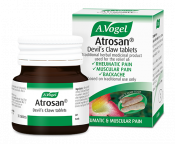An introduction to rheumatism
Rheumatism is a general and non-specific term used to describe symptoms of pain in joints, muscles and surrounding soft tissue (known as connective tissue). The word is no longer used by doctors but may be heard in conversation by the older generation – e.g. ‘I’ve got a touch of rheumatism’.
The word rheumatism can be traced back to the late 14th Century with the use of reumatik in middle England, said to orginate from rheuma (Latin) or rheŭma (Greek) meaning “to flow like a stream or river”. This is said to refer to the symptom of ‘intense flowing pain’ affecting the joints, tendons, muscles and ligaments of the body.
At that time, physicians had a limited understanding of inflammation and bundled all painful disorders of muscles, bones, joints and soft tissues into one big box and labelled it rheumatism.
With the advancement of medical knowledge over the past 50 years, we now know that ‘rheumatism’ covers a wide range of health conditions and symptoms – from local inflammation of one specific joint or area of the body (such as a knee pain or lower back pain) to more generalised conditions giving rise to pain in joints and muscles such as rheumatoid arthritis.
These have been termed rheumatic diseases and today, doctors specialising in these conditions are known as rheumatologists. So, although the word rheumatism no longer has a specific medical meaning, its use lives on in hospital rheumatology departments all over the world.
The rest of this page gives a brief description of rheumatic symptoms and rheumatic conditions.
What are the symptoms of rheumatism?
Most people with rheumatism will not describe their symptoms as ‘flowing like a stream’ as they did in the 14th Century. However, people with severe rheumatism symptoms can relate to the description of ‘intense flowing pain’.
People with a rheumatic condition may experience joint pain, muscle pain or both.
Pain is caused by inflammation and is experienced to varying degrees. It may be accompanied by stiffness of a joint or limitation of movement of the painful body part. Joints affected can range from the smallest in the foot to the larger joints in the hip and knee or spinal pain giving rise to neck pain or back pain.
Which disorders give rise to rheumatism symptoms?
Over 100 conditions are now known to give rise to rheumatism symptoms and no doubt, others will follow as we learn more about inflammation in the body.
In general, any condition giving rise to pain and inflammation, limiting movement of a joint, muscle or tendon will fall under the umbrella term ‘rheumatic condition’ giving rheumatism symptoms.
These conditions may affect just one joint or area, or be more generalised, affecting many parts of the body.
Rheumatism affecting one joint or area of the body
The common rheumatism conditions affecting one joint or area of the body are:
- Tendonitis – this is when a tendon becomes inflamed
- Bursitis – when a soft tissue structure known as a bursa around a joint becomes inflamed
- Repetitive Strain injury – commonly affects the hands and wrists of office workers, but can be seen in other small joints of the body
- Frozen shoulder – this causes difficulty in raising the arm. Sometimes, it is related to tissue injury such as a muscle strain (or pulled muscle) and yet at other times, no obvious cause can be identified
- Carpal Tunnel syndrome – arises because of pressure of a nerve in the wrist, giving rise to tingling in the hands
- Neck pain – may also be described as shoulder pain making it difficult to turn the head
- Gout – inflammation of joints as a result of the deposition of uric acid crystals in joint tissue
- Osteoarthritis – this is ‘wear and tear’ of a joint and not strictly speaking a rheumatic condition. However similar symptoms of pain and limitation of movement are experienced
- Back pain – there are many causes of back pain. Some, such as a slipped disc, are conditions treated by osteopaths, chiropractors or orthopaedic specialists.
Generalised rheumatism symptoms
Rheumatic symptoms or pain can also affect a number of parts of the body simultaneously. These are usually what doctors term rheumatic disorders or conditions.
Common rheumatic conditions affecting more than one area or part of the body include:
- Rheumatoid arthritis – appears in a number of variants held together by the common feature of the immune system acting against the tissue in and around joints
- Fibromyalgia – characterised by inflammation of the muscles and connective tissue in the body with a variety of causes
- Polymyalgia rheumatica – affects muscles of the shoulders and thighs
- Lupus, scleroderma, polymyositis, dermatomyositis – all autoimmune illnesses affecting muscles and connective tissue
Treatment of rheumatism symptoms
If you suffer from rheumatism, you may find that a change in your diet and lifestyle can help reduce your symptoms. To learn more, follow the link to our page on Diet and Lifestyle tips for rheumatism.
- Pain-killing medication – these are pills or gels prescribed by your doctor or available from your local pharmacy without a prescription. In general, pain-killers should be used with care and it is important to avoid becoming dependent on them.
- There are several natural remedies that can help with muscle and joint pains. These include Devil’s Claw and Arnica.
Finally, many people experiencing joint and muscle pain of rheumatism find that reducing stress levels and keeping a look out for the tell-tale signs of worry, low mood or anxiety can help a great deal. This is the reason that relaxation techniques such as yoga or hypnotherapy can help you reduce the pain experienced.








